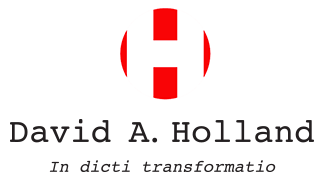Another deleted scene from the book, The Faith and Values of Sarah Palin:
For most of us, our life memories begin with a small collection of hazy scenes from our fourth or fifth year of life. This is true for Sarah Palin, and thus her earliest memories are of Skagway. Most of those remembrances, in turn, are of the sights, sounds and smells of summer.
That summer dominates her memories isn’t surprising. Summer in Alaska’s panhandle is a natural circus for a child’s senses. Both the moose and the glaciers are calving. Family hikes along the storied Chilkoot Trail present glimpses of brown bears, foxes, and eagles on land; and of orcas, sea otters, and seals in the water below. Furthermore, summer meant a busy harbor as commercial fisherman, fishing guides, suppliers, outfitters, and steady stream of sightseers on day trips out of Juneau all moved in and out of the docks at the southwest end of town. The Palin house offered a front row seat for this daily aquatic ballet.
Chuck Heath had rented a small clapboard house on the gravel-paved corner of First and Main. This placed the Heath family at the lower, seaside edge of town, about 250 yards from the water’s edge and about 100 yards from the gravel airstrip that ran parallel to Main Street. The owner of the house, Elmer Rasmusen, was the son of Swedish missionary immigrants who found spectacular success as pioneers of banking in the Alaska territory. Elmer had grown up in Skagway, and ultimately inherited and expanded the banking empire founded by his parents. When he died in 2000 at the age of 91, Rasmusen left his entire $400 million fortune to charity. Today the Rasmusen name adorns dozens of public works, parks, museums and institutions across Alaska—an ongoing testament to the family’s dual legacy of enterprising effort and Christian philanthropy.
When the children were old enough to understand, Chuck and Sally Heath told them of their rich and famous landlord; and how his parents had come to nearby Yakutat, Alaska, as Swedish Covenant missionaries in the early 1900s, going on through hard work and imagination to build thriving businesses on the Alaskan frontier. They would have learned that one of the richest men in Alaska had, as a little boy, slept in the little bedroom that the Heath girls now shared.
The headcount of Heath girls grew by one in those Skagway years with the birth of Molly in December of 1966. This fourth addition to the family would be the final one. The eldest, Chuck Jr., had been followed in almost annual succession by Heather and Sarah, and then a two-and-half-year gap brought Molly.
In the five-year season of transition and acclimation in Skagway, their father taught school, coached and earned his Master’s degree. He hunted moose, deer, caribou and pretty much anything else that was legally killable and edible—including seals and sea lions. He ran trap lines and fished. He was living his boyhood, Jack London dreams. And he delighted in taking the children on hikes into the mountains in search of relics left by the “Stampeders” who trampled the Chilkoot during the Yukon gold rush.
Chuck earned extra money in the summer in a variety of jobs, including work as a “gandy dancer,” or member of a track maintenance crew, on the WP&YR railroad that served as the only land-based link to the outside world in the 1960s. The White Pass & Yukon Railroad was a narrow-gauge rail line built during the Yukon gold rush days. Today a ride along its scenic, cliff-hanging turns, trestles and tunnels serves as the primary attraction for most of the 500,000 or so cruise ship passengers that disembark in Skagway each summer. Visit the current Heath home in Wasilla and you’ll find a large, circular WP&YR sign hanging proudly on the side of a storage barn filled with camping and fishing gear. It is partially obscured by nets, brightly colored buoys and other fishing gear. The sign serves as the most visible reminder of the Heath’s years in the Alaskan panhandle.
In a pattern that would hold true throughout Sarah’s and her sibling’s early lives, a happy division of labor was established between her parents at this time. Chuck took the lead in instilling in each child a love for the outdoors and of athletic endeavor—his twin personal passions. In every season there were activities to pursue, skills to be developed and adventures to be lived. Sally gamely supported and participated in it all.
For her part, Sally served as the family’s center of gravity where faith and spiritual things were concerned. Like any good Irish Catholic mother, she saw that her children attended catechism at nearby St. Therese of the Child Jesus Catholic Church; and she read them uplifting stories. As Sally tells it, she didn’t know much about God at that time, but what she knew she shared with her little ones. Indeed, in later years she would confess that she made church a part of their lives in those days more out of inherited cultural habit than conviction. Nevertheless, she made sure her children recognized that there was an amazing Creator behind all those wonders of creation her husband took such joy in presenting to them.
Chuck was fully supportive if not fully involved in Sally’s efforts at religious training. His tendency to personally keep religion at arm’s length is understandable, given his upbringing. Though Chuck Heath may not have always accompanied his wife to mass, he firmly insisted that the children do so.
In years to come, Sarah will seem to have absorbed both of these parental endowments—a love for Nature and for Nature’s God—in full and equal measure. But even in these first years of frontier life—and living frontier dreams–some key characteristics that would define the woman Sarah Palin, were already emerging, as we shall see.

